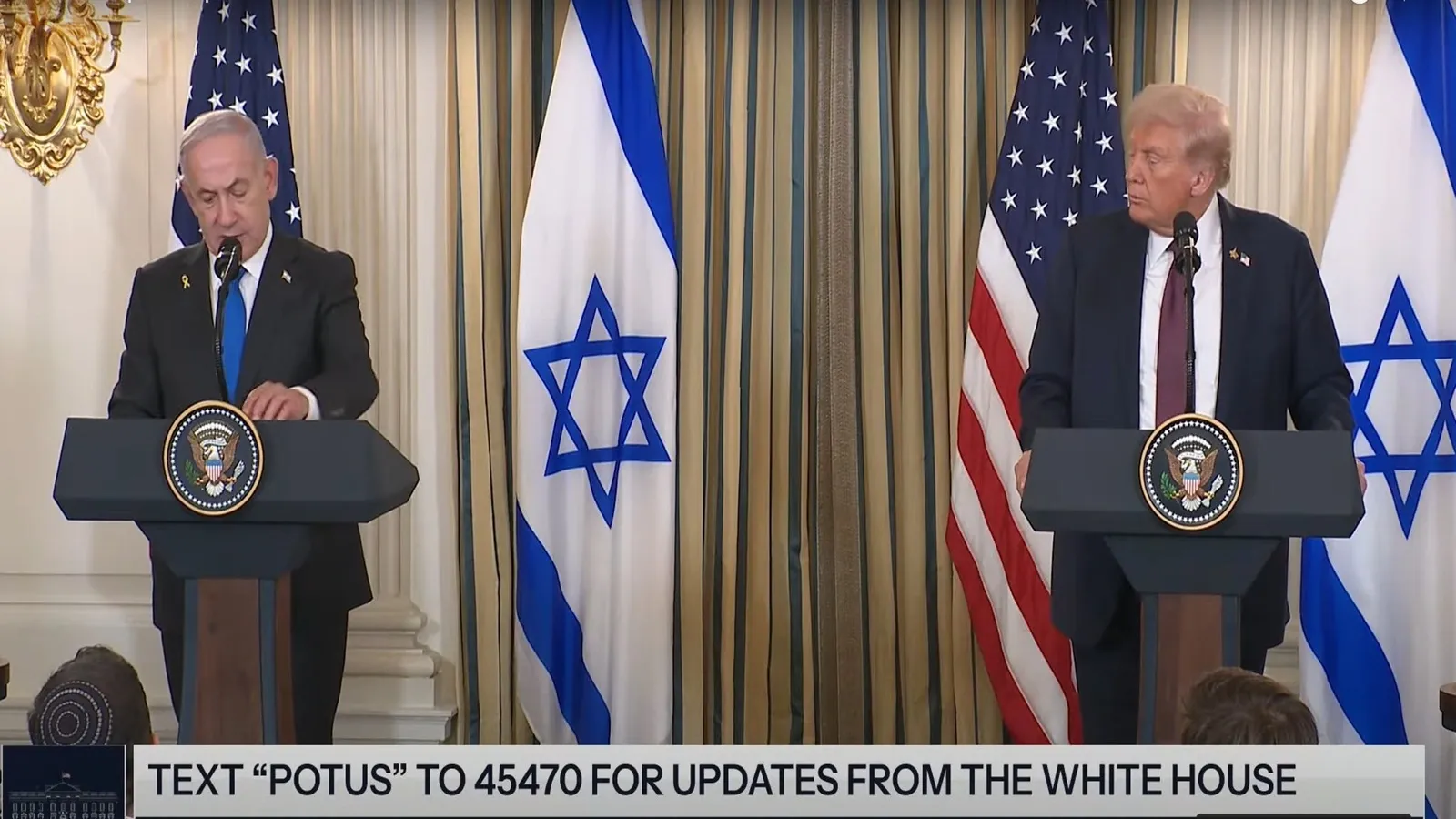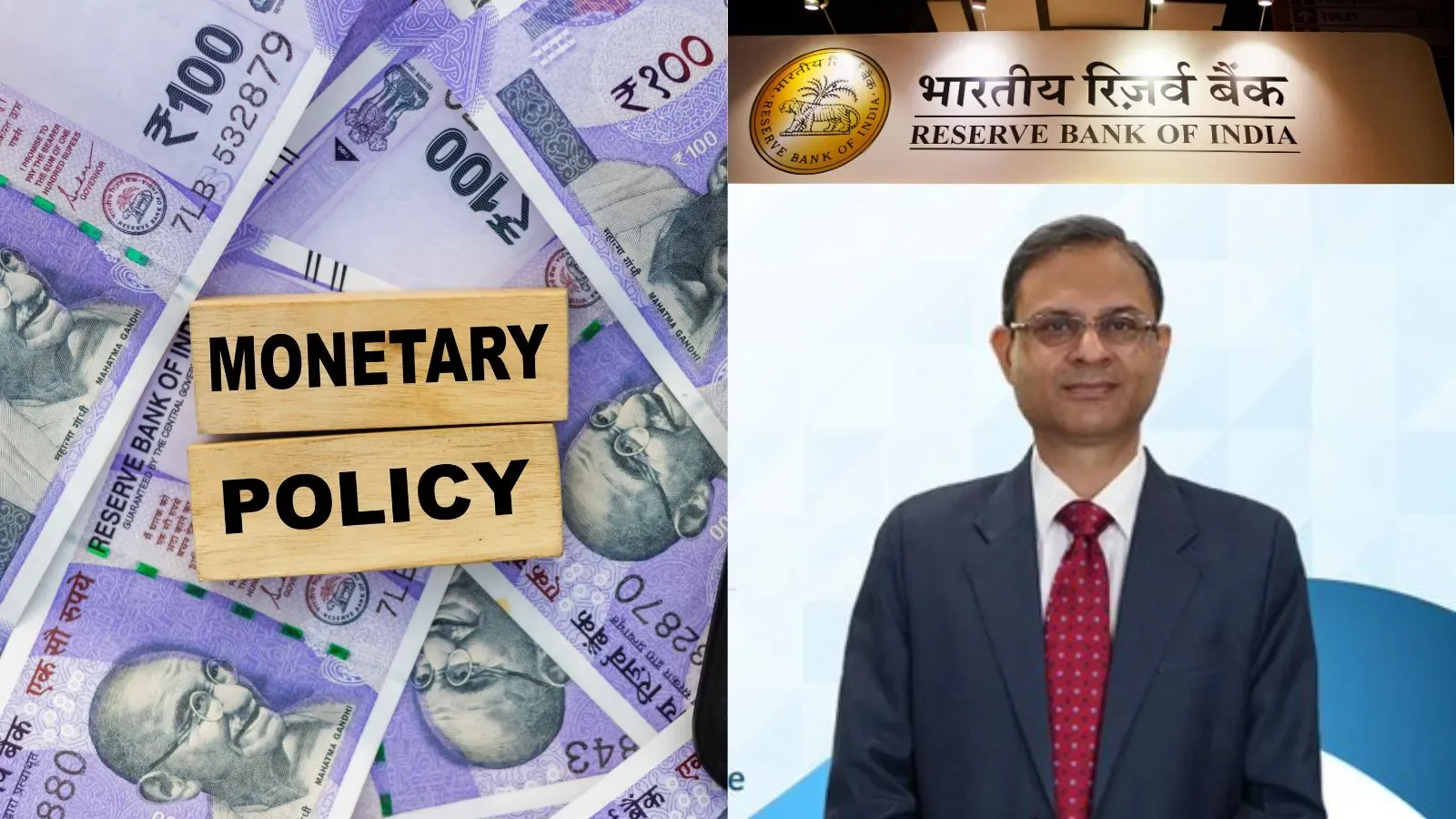Business News
From reconstruction to 'Board of Peace': What’s in Trump’s 20-point plan to end war in Gaza?
.png)
9 min read | Updated on September 30, 2025, 10:13 IST
SUMMARY
US President Donald Trump unveiled a 20-point peace proposal to end Israel’s two-year war in Gaza. While the plan got the support from Israeli Prime Minister Benjamin Netanyahu, it left Hamas’ acceptance in doubt.

US President Donald Trump speaks during a news conference with Israel's Prime Minister Benjamin Netanyahu in the State Dining Room of the White House, Monday, Sept. 29, 2025, in Washington.
US President Donald Trump on Monday announced a sweeping US-backed proposal to end Israel’s nearly two-year war in Gaza, securing the public support of Israeli Prime Minister Benjamin Netanyahu but leaving open the critical question of whether Hamas will accept terms that would force it to disarm and relinquish power.
Speaking at a joint White House news conference, Trump said the two leaders were “beyond very close” to a deal he described as historic.
“If we work together, we can bring an end to the death and destruction that we’ve seen for so many years, decades, even centuries,” he said.
The White House simultaneously released a 20-point plan that calls for an immediate cease-fire, a phased Israeli withdrawal from Gaza, the release of hostages in exchange for Palestinian prisoners, the disarmament of Hamas, and the establishment of a transitional international administration.
Gaza, under the proposal, would be governed by a temporary technocratic committee overseen by an international “Board of Peace” chaired by Trump and former British Prime Minister Tony Blair.
Netanyahu, standing beside Trump, embraced the plan, calling it “a plan to end the war in Gaza that achieves our war aims.”
He said it would bring home Israeli hostages, dismantle Hamas’ military infrastructure and prevent the enclave from ever posing a threat to Israel again.
But Hamas, absent from the talks and long resistant to disarmament, was widely seen as the decisive obstacle to the plan’s viability.
The Islamist group continues to hold dozens of Israeli hostages and has said it would not release them without a clear guarantee that the war will end and Israeli forces will withdraw entirely.
The plan demands that Hamas release all hostages within 72 hours of Israel’s acceptance, including the remains of those killed, in exchange for Israel freeing more than 1,900 Palestinian prisoners and detainees.
It also offers amnesty for Hamas members who surrender weapons and a safe passage for those who choose to leave Gaza.
Under the framework, Israeli troops would gradually pull back as an international stabilisation force takes over. The force, composed of Arab and international partners, would secure borders, train Palestinian police and oversee Hamas’ disarmament. Israel would, however, maintain a “security perimeter presence” along Gaza’s boundaries.
The plan pledges large-scale humanitarian aid and reconstruction, with infrastructure, hospitals and schools rebuilt under international supervision. It guarantees that Palestinians will not be expelled and envisions Gaza’s redevelopment under a special economic zone to spur jobs and investment.
The Palestinian Authority, which governs parts of the occupied West Bank, welcomed the US effort and reiterated its willingness to cooperate on a comprehensive deal, according to its official WAFA news agency.
The plan envisions the authority eventually returning to govern Gaza, an idea Netanyahu’s right-wing allies reject outright.
Finance Minister Bezalel Smotrich, a key member of Netanyahu’s coalition, quickly drew “red lines” in a social media post, declaring that the Palestinian Authority must not be allowed into Gaza and that no Palestinian state could result.
Arab governments, including Egypt, Jordan, Qatar, Saudi Arabia, Turkey and the United Arab Emirates, welcomed the outline in a joint statement, signalling rare consensus in support of Washington’s mediation.
Trump ended Monday’s press conference without taking questions, leaving details of enforcement and timelines unclear.
The proposal makes only a modest nod to the long-debated issue of Palestinian statehood, saying that if the Palestinian Authority successfully reforms and Gaza’s redevelopment advances, “conditions may finally be in place for a credible pathway to Palestinian self-determination and statehood.”
Whether Hamas, battered by Israel’s military campaign but still entrenched in Gaza, will accept such terms remains the central uncertainty. Rejecting the deal could open the way for Israel, with full US backing, to intensify its offensive in the devastated territory.
Here is the full text of Donald Trump’s proposal, verbatim:
- Gaza will be a deradicalised terror-free zone that does not pose a threat to its neighbours.
- Gaza will be redeveloped for the benefit of the people of Gaza, who have suffered more than enough.
- If both sides agree to this proposal, the war will immediately end. Israeli forces will withdraw to the agreed upon line to prepare for a hostage release. During this time, all military operations, including aerial and artillery bombardment, will be suspended, and battle lines will remain frozen until conditions are met for the complete staged withdrawal.
- Within 72 hours of Israel publicly accepting this agreement, all hostages, alive and deceased, will be returned.
- Once all hostages are released, Israel will release 250 life sentence prisoners plus 1700 Gazans who were detained after October 7th 2023, including all women and children detained in that context. For every Israeli hostage whose remains are released, Israel will release the remains of 15 deceased Gazans.
- Once all hostages are returned, Hamas members who commit to peaceful co-existence and to decommission their weapons will be given amnesty. Members of Hamas who wish to leave Gaza will be provided safe passage to receiving countries.
- Upon acceptance of this agreement, full aid will be immediately sent into the Gaza Strip. At a minimum, aid quantities will be consistent with what was included in the January 19, 2025, agreement regarding humanitarian aid, including rehabilitation of infrastructure (water, electricity, sewage), rehabilitation of hospitals and bakeries, and entry of necessary equipment to remove rubble and open roads.
- Entry of distribution and aid in the Gaza Strip will proceed without interference from the two parties through the United Nations and its agencies, and the Red Crescent, in addition to other international institutions not associated in any manner with either party. Opening the Rafah crossing in both directions will be subject to the same mechanism implemented under the January 19, 2025 agreement.
- Gaza will be governed under the temporary transitional governance of a technocratic, apolitical Palestinian committee, responsible for delivering the day-to-day running of public services and municipalities for the people in Gaza. This committee will be made up of qualified Palestinians and international experts, with oversight and supervision by a new international transitional body, the “Board of Peace,” which will be headed and chaired by President Donald J. Trump, with other members and heads of State to be announced, including Former Prime Minister Tony Blair. This body will set the framework and handle the funding for the redevelopment of Gaza until such time as the Palestinian Authority has completed its reform program, as outlined in various proposals, including President Trump’s peace plan in 2020 and the Saudi-French proposal, and can securely and effectively take back control of Gaza. This body will call on best international standards to create modern and efficient governance that serves the people of Gaza and is conducive to attracting investment.
- A Trump economic development plan to rebuild and energise Gaza will be created by convening a panel of experts who have helped birth some of the thriving modern miracle cities in the Middle East. Many thoughtful investment proposals and exciting development ideas have been crafted by well-meaning international groups, and will be considered to synthesise the security and governance frameworks to attract and facilitate these investments that will create jobs, opportunity, and hope for future Gaza.
- A special economic zone will be established with preferred tariff and access rates to be negotiated with participating countries.
- No one will be forced to leave Gaza, and those who wish to leave will be free to do so and free to return. We will encourage people to stay and offer them the opportunity to build a better Gaza.
- Hamas and other factions agree to not have any role in the governance of Gaza, directly, indirectly, or in any form. All military, terror, and offensive infrastructure, including tunnels and weapon production facilities, will be destroyed and not rebuilt. There will be a process of demilitarisation of Gaza under the supervision of independent monitors, which will include placing weapons permanently beyond use through an agreed process of decommissioning, and supported by an internationally funded buy back and reintegration program all verified by the independent monitors. New Gaza will be fully committed to building a prosperous economy and to peaceful coexistence with their neighbours.
- A guarantee will be provided by regional partners to ensure that Hamas, and the factions, comply with their obligations and that New Gaza poses no threat to its neighbours or its people.
- The United States will work with Arab and international partners to develop a temporary International Stabilization Force (ISF) to immediately deploy in Gaza. The ISF will train and provide support to vetted Palestinian police forces in Gaza, and will consult with Jordan and Egypt who have extensive experience in this field. This force will be the long-term internal security solution. The ISF will work with Israel and Egypt to help secure border areas, along with newly trained Palestinian police forces. It is critical to prevent munitions from entering Gaza and to facilitate the rapid and secure flow of goods to rebuild and revitalise Gaza. A deconfliction mechanism will be agreed upon by the parties.
- Israel will not occupy or annex Gaza. As the ISF establishes control and stability, the Israel Defense Forces (IDF) will withdraw based on standards, milestones, and timeframes linked to demilitarization that will be agreed upon between the IDF, ISF, the guarantors, and the United States, with the objective of a secure Gaza that no longer poses a threat to Israel, Egypt, or its citizens. Practically, the IDF will progressively hand over the Gaza territory it occupies to the ISF according to an agreement they will make with the transitional authority until they are withdrawn completely from Gaza, save for a security perimeter presence that will remain until Gaza is properly secure from any resurgent terror threat.
- In the event Hamas delays or rejects this proposal, the above, including the scaled-up aid operation, will proceed in the terror-free areas handed over from the IDF to the ISF.
- An interfaith dialogue process will be established based on the values of tolerance and peaceful co-existence to try and change mindsets and narratives of Palestinians and Israelis by emphasising the benefits that can be derived from peace.
- While Gaza re-development advances and when the PA reform program is faithfully carried out, the conditions may finally be in place for a credible pathway to Palestinian self-determination and statehood, which we recognise as the aspiration of the Palestinian people.
- The United States will establish a dialogue between Israel and the Palestinians to agree on a political horizon for peaceful and prosperous co-existence.
By signing up you agree to Upstox’s Terms & Conditions
About The Author
Next Story

